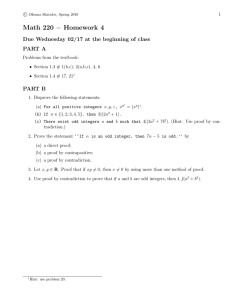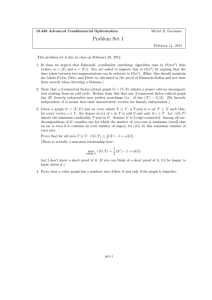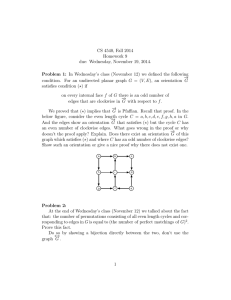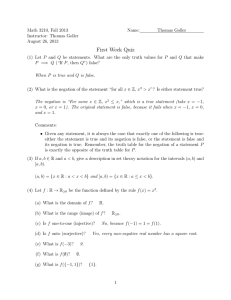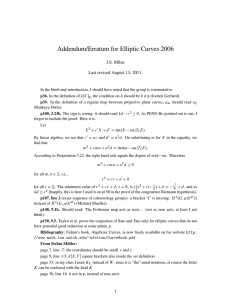Errata for Transition to Higher Mathematics: Structure and Proof p
advertisement
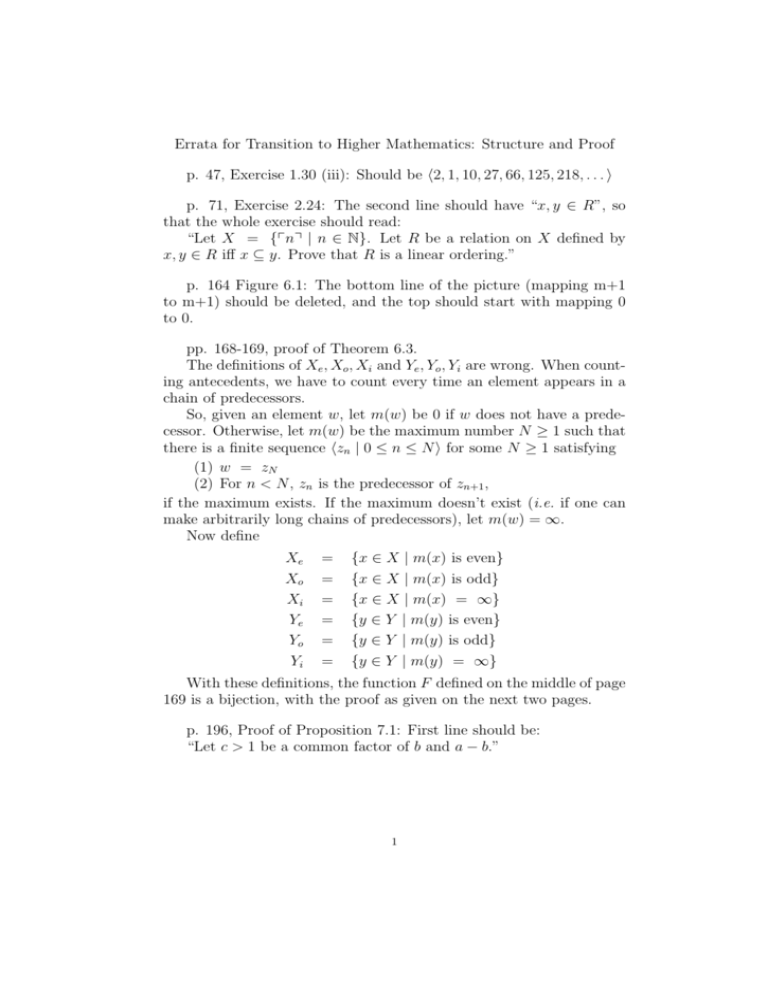
Errata for Transition to Higher Mathematics: Structure and Proof
p. 47, Exercise 1.30 (iii): Should be h2, 1, 10, 27, 66, 125, 218, . . . i
p. 71, Exercise 2.24: The second line should have “x, y ∈ R”, so
that the whole exercise should read:
“Let X = {pnq | n ∈ N}. Let R be a relation on X defined by
x, y ∈ R iff x ⊆ y. Prove that R is a linear ordering.”
p. 164 Figure 6.1: The bottom line of the picture (mapping m+1
to m+1) should be deleted, and the top should start with mapping 0
to 0.
pp. 168-169, proof of Theorem 6.3.
The definitions of Xe , Xo , Xi and Ye , Yo , Yi are wrong. When counting antecedents, we have to count every time an element appears in a
chain of predecessors.
So, given an element w, let m(w) be 0 if w does not have a predecessor. Otherwise, let m(w) be the maximum number N ≥ 1 such that
there is a finite sequence hzn | 0 ≤ n ≤ N i for some N ≥ 1 satisfying
(1) w = zN
(2) For n < N , zn is the predecessor of zn+1 ,
if the maximum exists. If the maximum doesn’t exist (i.e. if one can
make arbitrarily long chains of predecessors), let m(w) = ∞.
Now define
Xe
Xo
Xi
Ye
Yo
Yi
=
=
=
=
=
=
{x ∈ X | m(x) is even}
{x ∈ X | m(x) is odd}
{x ∈ X | m(x) = ∞}
{y ∈ Y | m(y) is even}
{y ∈ Y | m(y) is odd}
{y ∈ Y | m(y) = ∞}
With these definitions, the function F defined on the middle of page
169 is a bijection, with the proof as given on the next two pages.
p. 196, Proof of Proposition 7.1: First line should be:
“Let c > 1 be a common factor of b and a − b.”
1
